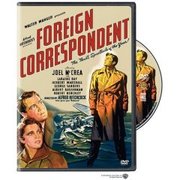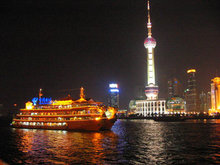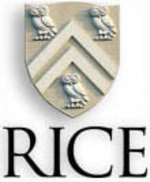Our debates concerning war are always one-dimensional.
That’s because our leaders, and the media who follow them, begin with the assumption that the military is the only weapon of war at their disposal.
This has always been false. Americans understood this clearly under the FDR Thesis. During World War II, President Roosevelt insisted on calling our side the United Nations. He found the movies to be a spectacular weapon of war, and deployed it aggressively even before Pearl Harbor. (Watch Hitchcock’s Foreign Correspondent next time it’s on TCM.) Historians credit our economic strength for the victory, which was also the case for the north in the earlier Civil War.
Diplomatic, cultural and economic weapons are often decisive in conflicts large and small. Without the use of cultural weapons apartheid would still exist in South Africa. Diplomacy turned the tide of war in Kosovo, and economic power, not Iranian weaponry, won the war against the Sandanistas.
Yet all our debates over Iraq War strategy involve only what we will do with our military. I believe this has a lot to do with the Nixon Thesis of Conflict, the myths and values under which our leaders have operated for a generation now, assumptions we all bring to the table when we discuss politics and policy.
While Nixon used diplomacy and fought the culture wars, it was the presence of troops in the field, of boots on the ground, that was the basis of his war politics. Somehow, ever since, we have not felt ourselves to be engaged unless we were using military force.
This is brain dead thinking. This is why we are losing the Global War on Terror, why terror is winning.
Instead of talking about Iraq, or even Afghanistan, I would like to hear someone talk about the Four Dimensional War, and how we will go on the offensive in it.
The Four Dimensional War takes full advantage of the Internet
Thesis, because it is based on the Internet, and acknowledges that the
Internet is indeed threatened by our present tactics. (Pictured is Shanghai, where all Four Dimensions are in play. They’re beatable because state control reduces the effectiveness of every other weapon they have.)
Specifically, the idea is to use the closed nature of our enemies
and their worldview against them, and deploy all our assets. In many
ways it means an emphasis on rebuilding those assets, which have been
so horridly degraded in these last six years. Politically we need to face that
degradation, and then set policies in place to reverse it.
Improved broadband, greater competition, and a real emphasis on
energy technologies, starting with a leveling of the playing field
against hydrocarbons, are all key to the fight. Encouraging foreign
travel, rather than discouraging it, and embracing the culture we have
throughout the West are also part of it. Diplomatically we want to
unite everyone we can around the essential ideas of liberty, not just
through words but through deeds. Living up to our own ideals will do more to bring Al Qaeda will hear than all the Gulags we could ever build.
At the start of this decade the United States represented 29% of
world production, 29%! It’s closer to 20% now, and continuing to
decline. Turning that around doesn’t require smokestacks. These weren’t
how we attained leadership in the 1990s. But it does require expanding education
for everyone, using this medium far more than we do, and embracing
those whose degrees through this medium — students from Troy and
Central Michigan as well as schools like the University of Phoenix.
The aim must be to grow our economy, to expand and export our
culture, and to unite people diplomatically, rather than merely killing
them. When we have to use our military, that use has to follow the Powell
Doctrine, something ignored in this decade. Know how to get out before you get in.
If we can get on the offensive, and deploy all Four Dimensions of
our strength, this War on Terror can actually end pretty quickly. If we
fail to do this, if we insist on using solely our military, we’ll lose.
As we’re losing now.












